Navigation
Install the app
How to install the app on iOS
Follow along with the video below to see how to install our site as a web app on your home screen.
Note: This feature may not be available in some browsers.
More options
Style variation
You are using an out of date browser. It may not display this or other websites correctly.
You should upgrade or use an alternative browser.
You should upgrade or use an alternative browser.
China Auto Thread
- Thread starter StraightEdge
- Start date
Yommie
SpeedLimited
- Oct 2, 2013
- 64,255
- 37,195
- Country of Origin

- Country of Residence

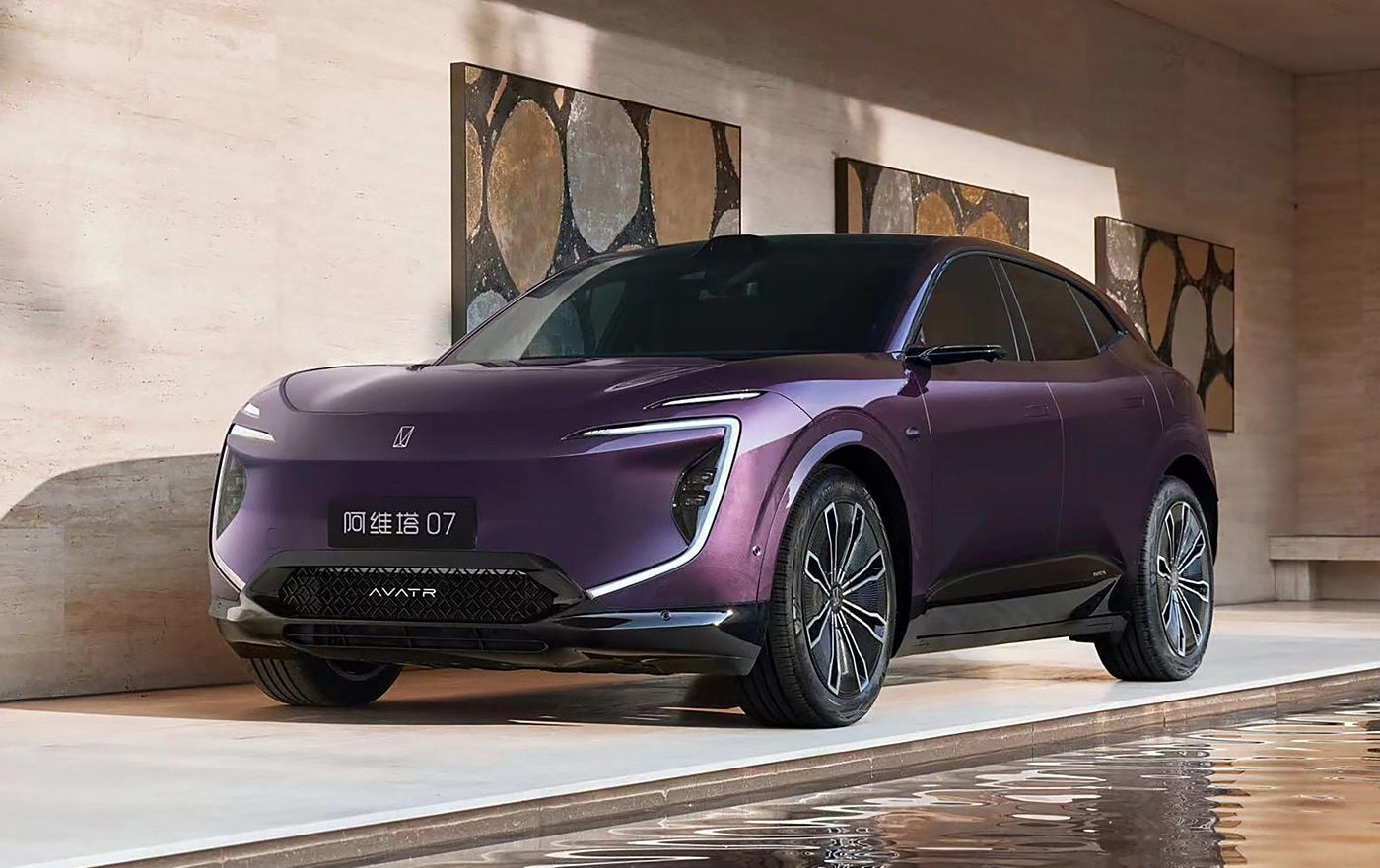
Avatr 07 interior exposed in China and it looks a winner
New pictures show us the best details yet of the interior of the forthcoming Avatr 07 which should launch in the next few months.
 carnewschina.com
carnewschina.com
Avatr 07 interior exposed in China and it looks a winner
Reading Time: 3 minutes
Mark Andrews
June 17, 2024
0

News like this to your inbox or phone?
Weekly summary to your inbox
I want this
Never miss and important news
Get Instant notification once the news is published.
Follow Us
Last week we brought you some rather poor spy pictures of the interior for the forthcoming Avatr 07. This week we’re back with some altogether far better pictures and early indications show that the interior should be a big selling point for the Avatr brand’s third model.
Perhaps most strikingly the Avatr 07 employs a four-screen setup in the front and it is similar to the latest versions of the Avatr 11 and 12. There is a long narrow instrument panel screen that runs most of the width of the interior. From one picture we can see a 104 km range displayed while the bar shows the car is around half its electric capacity. Meanwhile, a yellow fuel warning shows and the fuel range fails to show obviously indicating the picture is of the EREV version. From these we can deduce that the all-electric range of the EREV is around 200 km. Also displayed on the instrument panel are items such as tire pressure.
At each end of the panel are screens for the side view cameras. Although legal in China since July last year the Avatr 07 will be one of the few cars to so far use them. We can also see that the interior is largely devoid of buttons. From one picture we can see the infotainment unit has virtual buttons at the bottom for controlling the AC.
There’s a dual wireless charging pad for mobile phones. We can also see that there is gold highlighting in various places such as the divider for the phone charger and on the steering wheel where the control buttons are. The centre console’s compartment is side opening and can be opened from either side.
Surprisingly the pictures show a much lighter looking interior than in the spy shots. We can see perforated leather seats in a twin-tone beige and brown color. There also appears to be blue ambient lighting.
In the back there is a big fold down armrest and it seems as if the seats might be electrically adjustable.
Previous reports claimed the battery capacity for the EREV was 39 KWh giving up to 188 km all-electric range but given the new information from the interior indicating the range is higher this might not be correct. Alternatively, 188 km might be the range for the dual motor EV version which uses a 231 kW motor on the rear axle and an additional 131 kW motor on the front – single motor versions just use the 231 kW rear motor. Range extension comes via a 115 kW 1.5 liter engine from Changan and the car has a 190 km/h top speed.
All electric versions are also available with a choice of single or dual motors. Both use a 252 kW motor at the back with all-wheel drive versions adding a 188 kW motor to the front axle. The rear motor is from Changan’s Deepal brand whereas the front one is from Chongqing Tsingshan Industrial. Top speed is 200 km/h.
Editor’s note:
The Avatr 07 has dimensions of 4825, 1980 and 1620 mm (l/w/h) and a wheelbase of 2940 mm. This is only marginally smaller than the Avatr 11 which measures in at 4880, 1970 and 1601 with a wheelbase of 2975 mm. It is expected that the price range will be 250,000 to 350,000 yuan (34,500 – 48,300 USD) which means that top spec versions will very much overlap with the Avatr 11 and could lead to a lot of sales cannibalization with most likely the Avatr 11 bearing the brunt.Source: Autohome
Yommie
SpeedLimited
- Oct 2, 2013
- 64,255
- 37,195
- Country of Origin

- Country of Residence

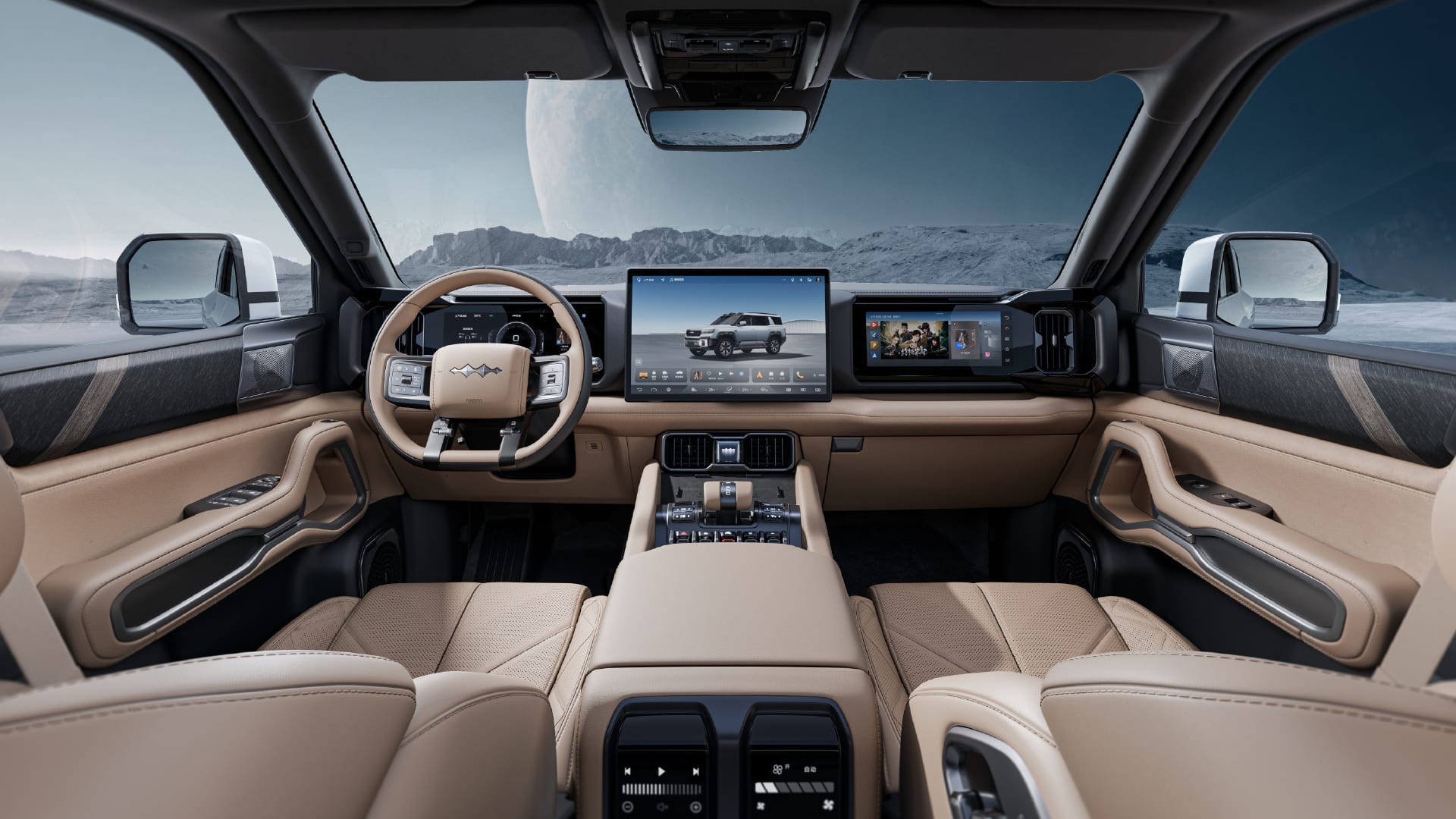
BYD Fang Cheng Bao Bao 8 unveiled interior in China as it’s ready to launch
The BYD’s Fang Cheng Bao Bao 8 revealed interior as it gets closer to the market launch. It is a 5.2-meter SUV with up to 7 seats inside.
 carnewschina.com
carnewschina.com
BYD Fang Cheng Bao Bao 8 unveiled interior in China as it’s ready to launch
Reading Time: 3 minutes
Denis Bobylev
June 17, 2024
0

News like this to your inbox or phone?
Weekly summary to your inbox
I want this
Never miss and important news
Get Instant notification once the news is published.
Follow Us
The BYD’s Fang Cheng Bao (FCB) Bao 8 officially revealed its interior in China as it gets closer to the market launch. It is a 5.2-meter SUV with up to seven seats inside. The FCB Bao 8 is powered by a DMO hybrid powertrain with a combined power of 939 hp. Its market launch is scheduled for Q3 2024.
From left to right: Bao 3, Bao 5, Bao 8
Fang Cheng Bao is an off-road brand launched by BYD last year. It currently sells a single model in China: the Bao 5 SUV (see specs). It entered the market in November last year. Its cumulative sales reached 21,316 units. BYD will launch two more models this year: the Bao 8 PHEV off-roader and the Bao 3 electric crossover. Now, BYD has unveiled official interior images of the Bao 8.
FCB Bao 8 interior images
The interior styling of the Fang Cheng Bao Bao 8 stays in line with the Bao 5 off-roader. It is also similar to the BYD Shark pickup truck. Its center console adopts three screens. The first one is a digital instrument panel. The second one is a touch screen for the front passenger. Last but not least is the huge floating main screen.The diameter of these screens has yet to be revealed. However, we think their dimensions stay in line with the Bao 5. This means the instrument panel and front passenger’s screen measure 12.3 inches, and the center monitor boasts a diameter of 15.6 inches.
The center tunnel of this PHEV beast has two wireless charging pads and a retractable gear selector. There is also a block of physical controls and a pair of cup holders. Under the center tunnel hides a spacious compartment. Another feature of the FCB Bao 8 is sturdy door cards with wooden trim.
The second row of the Fang Cheng Bao Bao 8 has two layout variants. The first one offers two independent electronically adjusted captain chairs with armrests. And the second option is more family-oriented, with a bench for three people. The second-row passengers can control climate and music with two screens in the center tunnel in front of them. The third row of the Bao 8 has two more seats. As a result, it is available with six or seven seats inside. There is no 5-seat variant, which is understandable because of the size of this off-road beast.
More on FCB Bao 8
As mentioned, the Bao 8 is a large SUV. It boasts hefty dimensions of 5195/1994/1875 mm with a wheelbase of 2920 mm. Under the hood, this beast has a 2-liter engine with a peak power of impressive 200 kW (268 hp). This ICE is supplemented by two e-motors for 200 kW and 300 kW (402 hp). Its combined power output reaches 939 horses.The Fang Cheng Bao Bao 8 will enter the Chinese market in the third quarter with a starting price of 500,000 yuan (68,900 USD). It will compete with the launched Tank 700 Hi4-T and the upcoming Tank 800 Hi4-T from GWM.
Source: FCB
Yommie
SpeedLimited
- Oct 2, 2013
- 64,255
- 37,195
- Country of Origin

- Country of Residence


Week after EU import tariff announcement, Chinese Leapmotor T03 rolls-off production line in Stellantis Polish plant
Production of the Leapmotor T03 has begun at the Stellantis plant in Poland. Second model, the A12, to follow in 2025.
 carnewschina.com
carnewschina.com
Week after EU import tariff announcement, Chinese Leapmotor T03 rolls-off production line in Stellantis Polish plant
Reading Time: 2 minutes
Mark Andrews
June 17, 2024
0
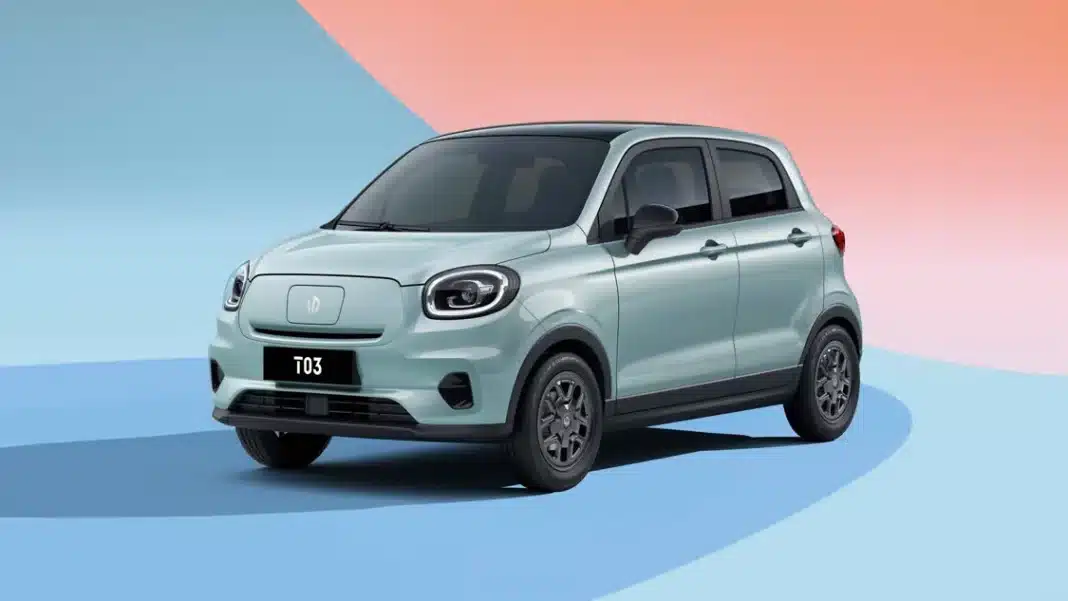
News like this to your inbox or phone?
Weekly summary to your inbox
I want this
Never miss and important news
Get Instant notification once the news is published.
Follow Us
Stellantis has reacted fast to the announcement of EU tariffs on Chinese EV imports due to come into effect on July 4. During an analyst conference call Leapmotor’s management announced that the first T03 models rolled off the assembly line in Tychy, Poland last week. Full mass production is scheduled for September.
Stellantis bought a 21% stake in Zhejiang-based Leapmotor last year and subsequently formed a joint venture Leapmotor International in which Stellantis has the controlling 51% share. Under the deal Stellantis has exclusive rights to build, export and sell Leapmotor products outside China.
Production of the Leapmotor model in Europe is commencing earlier than generally expected. It was only last month that Stellantic CEO Carlos Tavares announced that the Polish factory which currently produces the Jeep Avenger was being considered as a production base for Leapmotor in Europe.
Previously Tavares had said that it was more cost-effective to import than to produce locally. However, it is believed that Tavares changed his mind after the EU tariffs came in higher than Stellantis expected.
Earlier reports suggested that the T03, small car, would be produced from semi-knocked down kits (CKD). Whether this is still the plan is unclear but Reuters quoted analysts at Jefferies saying that Leapmotor was already starting to prepare for local production of components for a second model, due to go into production next year.
The small Leapmotor T03 electric hatchback being examined at IAA Mobility 2023, Munich Germany.
Production costs at the Polish factory are reported to be 400 to 500 Euro ($428.08-$535.10) per car, a similar figure to the cost to produce the car in China and less than half the cost of using an Italian plant.
Leapmotor sales in Europe are due to begin in September with the sales network scheduled to reach 200 outlets by the end of the year. Plans call for at least six models by 2027.
The Leapmotor T03 will compete with the Dacia Spring, a small car produced by Dongfeng, which was the tenth best-selling fully electric car in Europe last year.
The C10 the first world car from Leapmotor based on their Leap 3.0 architecture on display at IAA Mobility 2023, Munich Germany.
Production of a second model in Poland will begin next year and it is believed to be the A12 SUV which has previously been spied testing in China.
It is reported that for the moment the Leapmotor C10 SUV will be imported as part of the European sales lineup.
Sources: Reuters, Phoenix, Zhitong Finance
Yommie
SpeedLimited
- Oct 2, 2013
- 64,255
- 37,195
- Country of Origin

- Country of Residence


Xpeng’s X2 flying car showcases in Beijing
Do Xpeng’s flying vehicles give us glimpse into the future of urban mobility?
 carnewschina.com
carnewschina.com
Xpeng’s X2 flying car showcases in Beijing
Reading Time: 3 minutes
Naveed Rastegar
June 17, 2024
0

News like this to your inbox or phone?
Weekly summary to your inbox
I want this
Never miss and important news
Get Instant notification once the news is published.
Follow Us
On June 16th, Xpeng AeroHT showcased its X2 “flying car” at the 2024 China Langfang International Economic and Trade Fair. The demonstration took place at the Beijing International Airport Economic Zone. While not its first public test flight, this occasion marked the first flight of a flying car in the Beijing-Tianjin-Hebei region, highlighting the area’s target of developing “the low-altitude economy.”
In May, the Beijing City Government issued a draft action plan titled “Beijing Promotes the High-Quality Development of the Low-Altitude Economy Industry (2024-2027).” This plan aims to establish Beijing as a hub for innovation in the low-altitude economy. It explores new business models for flying cars, including intercity commuting and inner-city shuttle services. Just a few months ago, Xpeng CEO He Xiao Peng was in Beijing pitching his vision for flying vehicles to the National Congress.
Xpeng AeroHT, initially founded as Heitech in 2013 by Zhao Deli with financial support from Xpeng CEO He Xiaopeng, has made significant strides in the flying car industry. The company rebranded to AeroHT and debuted its first-generation flying car in 2016. By 2020, the company had launched its fifth-generation flying car, and in 2021, AeroHT completed its Series A financing round, raising over $500 million USD.
The Xpeng X2, known as Voyager 2 when originally launched, is more of a drone-type vehicle than a car. It features a two-seater design constructed mainly from carbon materials. The X2 measures 5172 mm in length, 5124 mm in width, and 1362 mm in height, with a curb weight of 680 kg and a maximum payload of 160 kg. Unlike most consumer drones with four motors, the X2 is an octocopter, providing extra thrust and redundancy. In case of motor failure, a built-in parachute ensures safety.
With a flight endurance of 25 minutes, the X2 has undergone nearly 4,000 test flights and has been tested in various scenarios, including urban areas, sea regions, and deserts. AeroHT plans to offer an extended-range option for the mass-produced version, presumably with a larger battery, to hit the market in the next few years. However, Xpeng will first produce the Land Carrier, which consists of a drone-type car and transport vehicle, in 2025. Spy shots of the Land Carrier emerged in March this year.
This demonstration in Beijing signifies another milestone in the development of flying car technology in China, as the Xpeng X2 continues to push forward for a future of urban and intercity transportation in the air.
Editors Note:
While it’s exciting to see the X2 being tested in Beijing, where many people can watch, it’s a bit odd that we aren’t seeing the Land Carrier model being tested first and more often since it is slated to start mass production next year.
That being said, the more testing we see, especially in more visible places like Beijing, the more likely we are to clear the regulatory hurdles, which are going to be one of the main challenges in getting “flying cars” off the ground for the general population’s usage.
Source: CN News
Yommie
SpeedLimited
- Oct 2, 2013
- 64,255
- 37,195
- Country of Origin

- Country of Residence


Dongfeng’s M-Hero 917 Dragon Armor Edition preorder begins, priced from 105,800 USD
Dongfeng’s M-Hero 917 Dragon Armor Edition uses carbon fiber to cover 22.3% of its body
 carnewschina.com
carnewschina.com
Dongfeng’s M-Hero 917 Dragon Armor Edition preorder begins, priced from 105,800 USD
Reading Time: 3 minutes
Adrian Leung
June 17, 2024
0

News like this to your inbox or phone?
Weekly summary to your inbox
I want this
Never miss and important news
Get Instant notification once the news is published.
Follow Us
The much-anticipated M-Hero 917 (see specs) Dragon Armor Edition is now available for pre-order, with prices ranging from 768,000 to 868,000 yuan (105,800 to 119,600 USD). This new model debuted at the Beijing Auto Show. It is a collaboration between Dongfeng and the movie “Operation Red Sea 2.” It features several upgrades from the base M-Hero 917, enhancing its off-road capabilities.
The color used on the SUV is called “desert storm military paint.” The front features a vertical grille. Carbon fiber covers 22.3% of the car, which includes the hood, roof, and side ladder racks. Additional exterior features include a roof expansion platform, multifunctional rear spare tire rack, front and rear metal bumpers, a 12,500-pound electric winch, and an RV tow bar. Various outdoor tools, including a fire axe, shovel, fuel tank, and fire extinguisher, are mounted on the sides and rear of the SUV.
The Dragon Armor Edition has a standard gray interior inspired by the Chinese dragon. It is also available in white and orange as an option. The interior has three large screens: a 15.6″ central control screen, a 12.3″ instrument panel, and a 12.3″ co-pilot panel. It also has Nappa leather seats and a suede headliner. The interior trim can be upgraded to carbon fiber from wood grain material.
The SUV is available in both BEV and EREV versions. The BEV version has a four-motor drive system, delivering a total power output of 800 kW and 1400 Nm of torque that can accelerate from 0 – 100 km/h in 4.2 seconds. It offers a CLTC range of up to 505 km. The EREV version features a 1.5T engine with 145 kW as a range extender. This version has three motors with 600 kW combined power output and a peak torque of 1050 Nm. The mixed range reaches up to 1,032 km (CLTC). The M-Hero 917 is built on Dongfeng’s new M-Tech platform. It measures 4987/2080/1935 mm in height, with a wheelbase of 2950 mm.
M-Hero, a brand under the state-owned Dongfeng, originated as a line of road-certified armored military vehicles. The M-Hero 917, an off-road electric SUV, launched in August 2023. It has been tested overseas for adaptability and has since been launched in Switzerland. This SUV passed the EU ECE and Middle East GSO vehicle certification. Dongfeng also planned to target Germany, France, and Norway in the EU and the UAE, Kuwait, and Saudi Arabia in the Middle East for market trials. The impact of the newly imposed EU tariffs on Dongeng’s expansion into these countries in the EU remains to be seen.
Yommie
SpeedLimited
- Oct 2, 2013
- 64,255
- 37,195
- Country of Origin

- Country of Residence

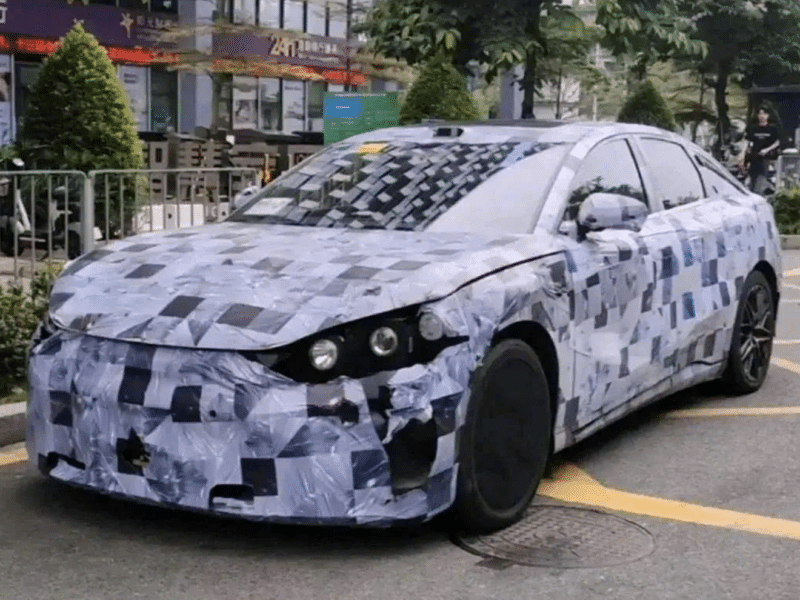
A new BYD Han spotted in China with Lidar and DM 5.0 PHEV system
Spy shots have emerged of a new Han. It may be a new generation and also has the DM 5.0 PHEV system along with Lidar.
 carnewschina.com
carnewschina.com
A new BYD Han spotted in China with Lidar and DM 5.0 PHEV system
Reading Time: 3 minutes
Mark Andrews
June 17, 2024
1
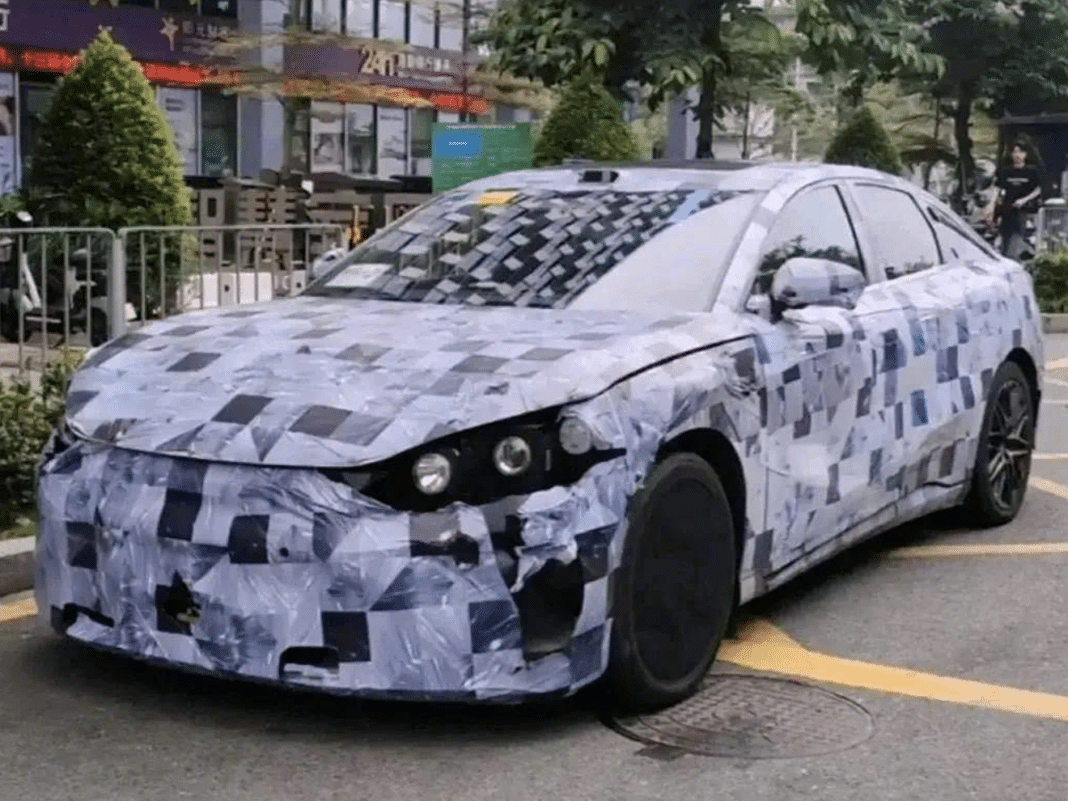
News like this to your inbox or phone?
Weekly summary to your inbox
I want this
Never miss and important news
Get Instant notification once the news is published.
Follow Us
Spy shots have emerged of yet another new BYD. This one is a sedan and is believed to be a new Han. Most significantly the car is reported to use BYD’s new DM 5.0 technology for its powertrain and a Lidar unit is visible in at least some of the spy shots.
The car seems visually larger than the Seal 07 DM-i. While the new sedan seems to be at an early stage of testing as evidenced by the temporary front and rear taillights installations, we can still get some idea of the overall look of the new car. At the front the latest Dynasty series design language is carried through and there will be a central grille along with probably quite large headlight clusters.
From the sides, the car seems to retain much of the current Han lines while the rear is quite chunky. One of the spy shots clearly shows a roof-mounted Lidar unit and so we can expect top spec models to have significantly upgraded driving assistance features to those currently available in the Han.
The new car is believed to be powered by BYD’s DM 5.0 technology which debuted last month. This fifth-generation PHEV technology was first seen in the Qin L and Seal 06 DM-i cars which boast three headline figures of 46.06% thermal efficiency, 2.9 l/100 km fuel consumption and 2,100 km range. BYD’s use of NEDC for the fuel consumption figure has attracted a lot of controversy especially when MIIT uses WLTC for official listings – the best figure for the two cars under that regime is 3.8 l/100 km.
Given that the new car seems considerably larger than the Qin L (see specs) and Seal 06 DM-i (see specs) we can expect fuel consumption to be worse and additionally the maximum range will probably be lower. Our best indication of what to expect is the Seal 07 DM-i which was recently declared. Depending on version the fuel consumption figures are 4.2, 4.4 and 4.7 l/100 km for that car. The Seal 07 DM-i has a choice between 10.08 and 17.626 kWh battery packs which are meant to be good for all electric ranges of 55 and 100 km respectively. It should be noted that the 4.7 l/100 km figure is for the version which uses the more powerful 1.5T engine with maximum power of 115 kW, all previous DM 5.0 cars used a 74 kW 1.5 engine. The Han will almost certainly offer this engine in some versions.
Editor’s note:
Some Chinese sources are calling this a second-generation Han. This may or may not be the case, however, from the spy shots it looks more like it uses that existing Han’s styling as a starting point rather than being a new generation. Most likely this car will be known as the Han DM-i with perhaps a letter or number.Sources: Fast Technology, Autohome, Fast Technology
Yommie
SpeedLimited
- Oct 2, 2013
- 64,255
- 37,195
- Country of Origin

- Country of Residence

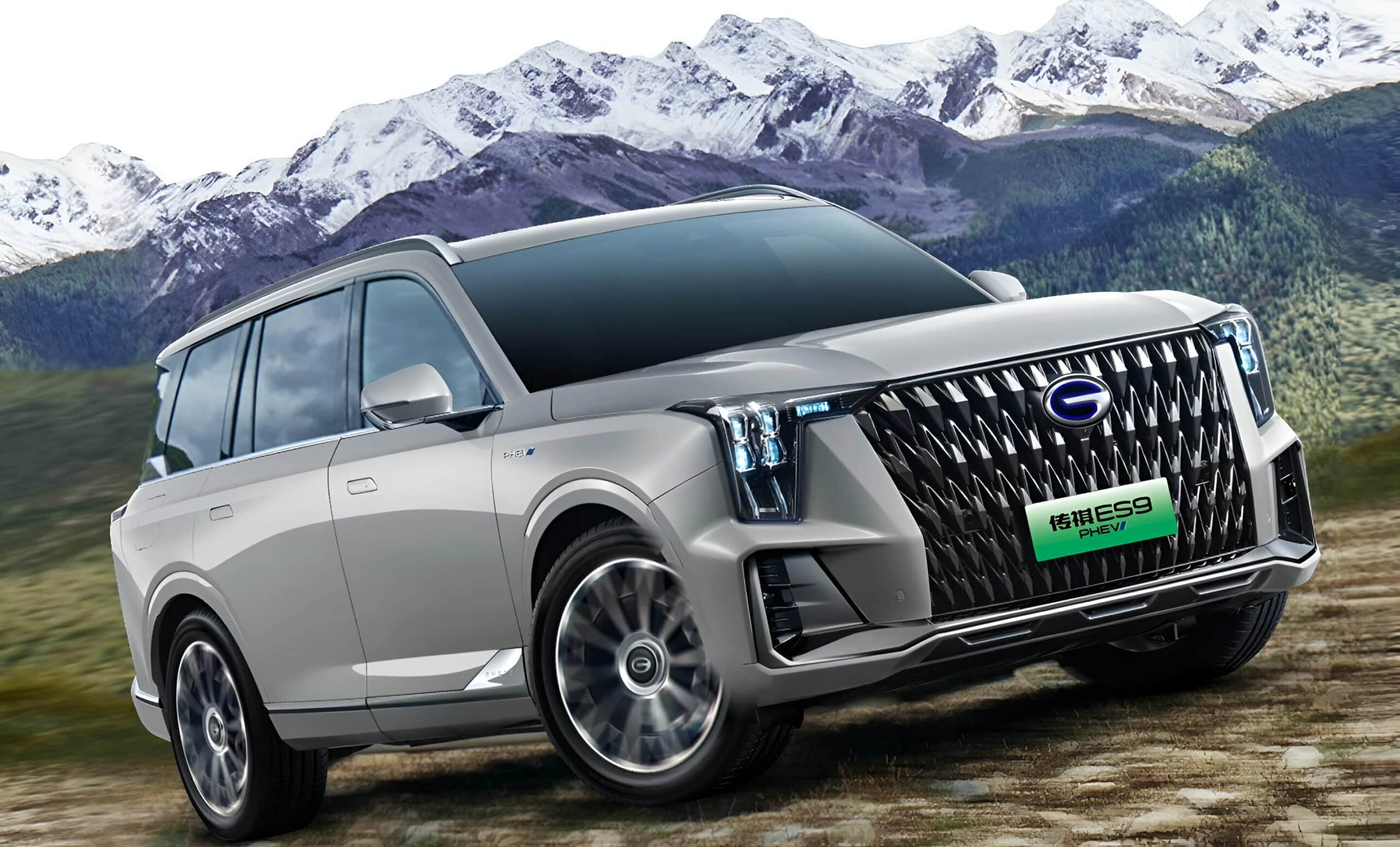
GAC Trumpchi launched ES9 variants with notable upgrades priced from 31,650 USD
The new GAC Trumpchi ES9 has a combined CLTC range of 1,215 km
 carnewschina.com
carnewschina.com
GAC Trumpchi launched ES9 variants with notable upgrades priced from 31,650 USD
Reading Time: 3 minutes
Adrian Leung
June 17, 2024
0

News like this to your inbox or phone?
Weekly summary to your inbox
I want this
Never miss and important news
Get Instant notification once the news is published.
Follow Us
GAC Trumpchi has introduced two new ES9 (see specs) models, the PRO+ and MAX+ versions, with pricing of 229,800 and 249,800 yuan (31,650 USD and 34,400 USD), respectively. These prices remain the same as their predecessors. The latest models maintain the current models’ exterior and interior design but come with significant upgrades. The new vehicles are positioned as mid-to-large plug-in hybrid SUVs.
The Pro+ model offers more luxury and comfort than the previous Pro version. It has an AR-HUD head-up display system and a panoramic electric sunroof with an electric sunshade. It also has sound-insulating front windows, an auto-dimming rearview mirror, a heated steering wheel, memory and auto-tilt rearview mirrors for parking, and wireless phone charging.
It has front-row leather seats with massage and ventilation. It also includes driver seat memory, electrically retractable driver seat cushioning, and lumbar support. The second-row seats are heated, and the third-row seats are electrically foldable.
The Max+ model has added safety features. It is upgraded with front fog lights, anti-glare high beams, and second-row aviation headrests. Additional features include AQS air quality control, facial recognition, gesture interaction, a bluetooth key, a knee airbag for the driver, and a collision warning vibration alert for the driver’s seat.
The new models have a 2.0T turbocharged plug-in hybrid system, delivering a maximum power of 274 kW and a peak torque of 630 Nm. The CLTC all-electric range is 143 km, with a combined CLTC range of 1,215 km and a fuel consumption of 6.18 L/100 km if the battery is depleted.
Guangzhou Automobile Group Co., Ltd. (GAC), a leading Chinese automaker headquartered in Guangzhou, Guangdong province, plays a significant role in the ICE and NEV markets. GAC Group reported that in May 2024, GAC sales reached 178,500 units, a 23.7% month-on-month increase. GAC Aion sold approximately 40,000 units, a month-on-month increase of over 40%. GAC Trumpchi sold 32,881 units, including 12,642 MPVs. Other models achieved monthly sales of 10,985 units, with the GS3 accounting for 6,939 units.
Yommie
SpeedLimited
- Oct 2, 2013
- 64,255
- 37,195
- Country of Origin

- Country of Residence


SAIC-GM-Wuling teases Wuling Starlight S SUV
The Wuling Starlight S is the second model under the Wuling Silver Label and will be available in BEV and PHEV variants.
 carnewschina.com
carnewschina.com
SAIC-GM-Wuling teases Wuling Starlight S SUV
Reading Time: 3 minutes
Dong Yi Chen
June 17, 2024
0

News like this to your inbox or phone?
Weekly summary to your inbox
I want this
Never miss and important news
Get Instant notification once the news is published.
Follow Us
On June 17, the SAIC-GM-Wuling joint venture released preview images of its upcoming Wuling Starlight S SUV, available in BEV and PHEV variants. The Wuling Starlight S is the second model under the Wuling Silver Label and is expected to have a price tag of around 69,800 yuan (9,620 USD).
Wuling Starlight S PHEV variantWuling Starlight S BEV variant
Although it is named Wuling Starlight S, it is different from the Wuling Starlight sedan. It is positioned as a compact SUV with dimensions of 4745/1890/1680 mm and a wheelbase of 2800 mm. For reference, the BYD Song Plus DM-i measures 4775/1890/1670 mm with a 2765 mm wheelbase. In terms of body size and model positioning, Wuling Xingguang S’s main competitors are expected to be BYD Song Plus DM-i and BYD Yuan Plus.
Based on the declaration information by the Chinese MIIT, the PHEV variant will be powered by a 1.5L naturally aspirated engine with a maximum power of 78 kW (106 hp) and will offer two battery pack options of 20.5 kWh and 9.5 kWh, corresponding to pure electric ranges of 90 km and 43 km, respectively. The electric motor spec has not yet been announced. Additionally, the battery weight is 137 kg & 185 kg and the fuel consumption is 4.98L/100km and 5.09L/100km, respectively.
The BEV variant will be equipped with an electric motor that has a maximum power of 150 kW (201 hp) and a lithium iron phosphate battery pack. The official range information has not been revealed at this time.
Preview images
Based on the preview images, which show the front and rear profiles, the Wuling Starlight S adopts split headlights and “7”-shaped taillights. The BEV and PHEV variants are distinguished by different front designs and chrome trims.
In terms of configurations, the Wuling Starlight S will offer optional sunroof, black roof, roof rack, and front radar. Safety features such as anti-lock braking and electronic brake force distribution are also available.
We’ll watch closely for more info, stay tuned!
Source: Chinese MIIT, DongCheDi, Wuling Silver Label
Yommie
SpeedLimited
- Oct 2, 2013
- 64,255
- 37,195
- Country of Origin

- Country of Residence


Chery Tiggo 8L SUV rendering images revealed
The Tiggo 8L is longer and wider than the current Tiggo 8, Tiggo 8 Pro, and Tiggo 8 Plus on sale.
 carnewschina.com
carnewschina.com
Chery Tiggo 8L SUV rendering images revealed
Reading Time: 3 minutes
Dong Yi Chen
June 17, 2024
0

News like this to your inbox or phone?
Weekly summary to your inbox
I want this
Never miss and important news
Get Instant notification once the news is published.
Follow Us
On June 17, Chery released the rendering images of its Tiggo 8L SUV, positioned as an “all-scenario family mid-size SUV” and the flagship model of the Tiggo 8 series with a “5+2” seat layout. It recently was granted a sales license by the Chinese regulator and is expected to launch in August to September timeframe.
Earlier on April 26, the Tiggo 8 series reached its 500,000th vehicle milestone with the Tiggo 8 Plus Kunpeng e+ rolling off the production line, making the series the fastest Chinese mid-size SUV and 7-seater SUV to reach this milestone, according to Chery. In 2023, the series sold 127,018 vehicles, a slight year-on-year increase of 5.4%. Furthermore, the entire Chery Tiggo family was the best-selling Chinese gasoline-powered SUV with a sales volume of 940,000 units.
In the front, the Chery Tiggo 8L has a larger grille with a dot matrix design, decorated with chrome trim around the edges. From the side, the Chery Tiggo 8L adopts hidden door handles, densely spoked rims, black wheel eyebrows, and a sunroof. The D-pillar position has a clear corner design.
Declaration images
According to previous declaration information by the Chinese MIIT, the car will run on 18, 19, and 20-inch rims.
Additionally, the dimensions are 4795/1930/1729 (1741) mm, and the wheelbase is 2770 mm, which is longer and wider than the current Tiggo 8, Tiggo 8 Pro, and Tiggo 8 Plus on sale. Consumers can choose from 5-seater and 7-seater interior layouts.
In the rear, the horizontal through-type taillight is coupled with the “CHERY” English logo and dual-sided exhaust layout, further highlighting the sportiness of the vehicle. Power will come from a 2.0T turbocharged engine code-named SQRF4J20, with a maximum power of 187 kW (251 hp) and a peak torque of 390 Nm. The Chery Tiggo 8L will also provide two-wheel drive and four-wheel drive options, with a fuel consumption of 7.8L/100km and 8.5L/100km, respectively.
Furthermore, other optional configurations including front/rear radar, green glass, roof luggage rack, and different rim styles are also available, according to the Chinese MIIT.
Source: Chery Weibo, Chinese MIIT, ITHome, QQ News
Yommie
SpeedLimited
- Oct 2, 2013
- 64,255
- 37,195
- Country of Origin

- Country of Residence


New Haval H6 SUV will launch on June 19 in China
The new Haval H6's price range may be from 12,400 to 19,300 USD, according to dealership staff prediction in China.
 carnewschina.com
carnewschina.com
New Haval H6 SUV will launch on June 19 in China
Reading Time: 3 minutes
Dong Yi Chen
June 17, 2024
0
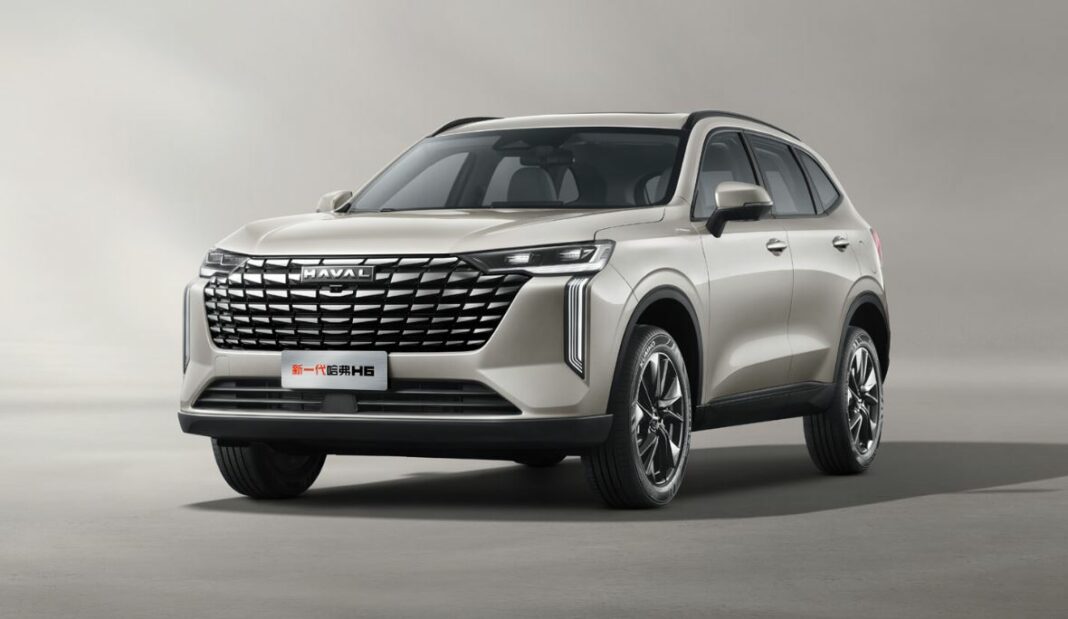
News like this to your inbox or phone?
Weekly summary to your inbox
I want this
Never miss and important news
Get Instant notification once the news is published.
Follow Us
Recently, Haval officially announced that its new Haval H6 compact SUV, which is the 4th generation model, will launch on June 19. Previously, the car has been opened for reservation. Although the price range has not been announced at this time, the dealership staff predicts that the price range may be 90,000 – 140,000 yuan (12,400 – 19,300 USD).
The new Haval H6 is built based on Great Wall Motor’s LEMON platform and measures 4703/1886/1730 mm with a 2738 mm wheelbase. The length is 50 mm longer than that of the third-generation Haval H6 while the other parameters are consistent. The Haval H6 was first launched on August 25, 2011.
As a facelift model, the new Haval H6 adopts a new front face design, featuring a large grille with a scale-shaped dot-matrix structure, integrated with the headlights on both sides.
At the same time, the rear design has been simplified. A new style taillight is used on both sides, while the Haval English logo is retained in the center.
1.5T engine
In terms of power, the new Haval H6 offers two different engines: 1.5T and 2.0T:
- 1.5T: maximum power 135 kW (181 hp), peak torque 275 Nm, mated to a 7-speed DCT, front-wheel drive
- 2.0T: maximum power 175 kW (235 hp) (previously 155 kW), peak torque 385 Nm, mated to a 9-speed DCT, front-wheel drive & four-wheel drive
Inside, the new Haval H6 inherited the same interior layout as that of the third-generation Haval H6, including the 10.25-inch floating instrument panel and 14.6-inch floating central control screen with a redesigned UI. Almost all physical buttons are removed from the center console. The vehicle operating system comes from Coffee OS 2.0 and is powered by a Qualcomm Snapdragon 8155 chip. Huawei HiCar4.0 is also supported.
Other available configurations are 50W wireless charging, 6-way electric adjustment of the driver seat, and more than 20 level 2 advanced driving assistance functions. The high-end trim is also equipped with a 9-inch HUD, front seat heating, dual-zone air conditioning, rear collision warning, and door opening warning.
In addition, the standard trunk volume is 560 L and can be expanded to 1485 L after folding down the rear seats.
Source: YiChe, AutoHome, Haval
Yommie
SpeedLimited
- Oct 2, 2013
- 64,255
- 37,195
- Country of Origin

- Country of Residence


New Chery Arrizo 8 with Chery’s self-developed 8AT enters market
The 2.0T engine variant is mated to Chery's self-developed Fuzhen 8AT gearbox.
 carnewschina.com
carnewschina.com
New Chery Arrizo 8 with Chery’s self-developed 8AT enters market
Reading Time: 3 minutes
Dong Yi Chen
June 17, 2024
0

News like this to your inbox or phone?
Weekly summary to your inbox
I want this
Never miss and important news
Get Instant notification once the news is published.
Follow Us
On June 16, Chery launched three new trims of its 2024 Arrizo 8 sedan with a price range of 122,900 – 148,900 yuan (16,900 – 20,500 USD). The biggest upgrade is that the 2.0T model is mated to Chery’s self-developed 8AT gearbox, while the 1.6T model is upgraded with a Qualcomm Snapdragon 8155 chip.
In terms of appearance, the design remains consistent, adopting the Art in Motion design language. The front face is dominated by a large trapezoidal grille and sharp headlights. The rear comes with dual exhaust outlets on each side, further enhancing the sportiness of the vehicle, combined with through-type taillights.
At the same time, the new Chery Arrizo 8 runs on 18-inch multi-spoke rims.
The size of the new trims measures 4780/1843/1469 mm, and the wheelbase is 2790 mm. A new Crystal Gray exterior color has also been added for the 1.6T trim.
The overall interior layout has not changed much, instead, the biggest change is the addition of a standard Qualcomm Snapdragon 8155 chip for the 1.6T trim. Now, the voice control function supports trunk control and the passenger seat supports four-way electric adjustment. Additionally, there is a 24.6-inch dual screen (12.3-inch LCD instrument panel + 12.3-inch central control screen), coupled with a flat-bottom steering wheel.
The high-end trim is also equipped with a 12-speaker Sony audio system, ambient lighting, steering wheel heating, and seat heating. Furthermore, the new Chery Arrizo 8 also comes with advanced driving assistance functions including lane departure assist, lane change assist, front and rear collision warning, door opening warning, traffic sign recognition, adaptive cruise control, and automatic emergency braking.
Power still comes from a 1.6T or 2.0T engine. The biggest change is that the 2.0T engine is mated to Chery’s self-developed Fuzhen 8AT gearbox (the older trim is 7DCT). It is worth mentioning that this is the first 8AT gearbox independently developed by Chery in China and manufactured in large quantities. The Fuzhen 8AT adopts a two-stage planetary gear set and a Ravigne planetary gear set arranged side by side, with a speed ratio of 7.8 and a weight of 94 kg.
The 2.0T engine has a power of 187 kW (254 hp) and a peak torque of 390 Nm. It can accelerate from 0 – 100 km/h in 7 seconds. In addition, the 1.6T engine outputs 145 kW (194 hp) and 290 Nm, mated to a 7-speed DCT. The official WLTC fuel consumption is 6.5L/100km.
Source: AutoHome, DongCheDi, Sohu
Users who are viewing this thread
Total: 1 (members: 0, guests: 1)
Pakistan Defence Latest
-
-
-
-
Azerbaijan Air Force Becomes Fourth Operator of JF-17 Fighter Aircraft, President Aliyev Confirms (2 Viewers)
- Latest: FOOLS_NIGHTMARE
Country Watch Latest
Latest Posts
-
Hezbollah-Israel Conflict 2024 - Lebanon & Occupied Palestine Territories (55 Viewers)
- Latest: hussain0216
-
-
-
-
